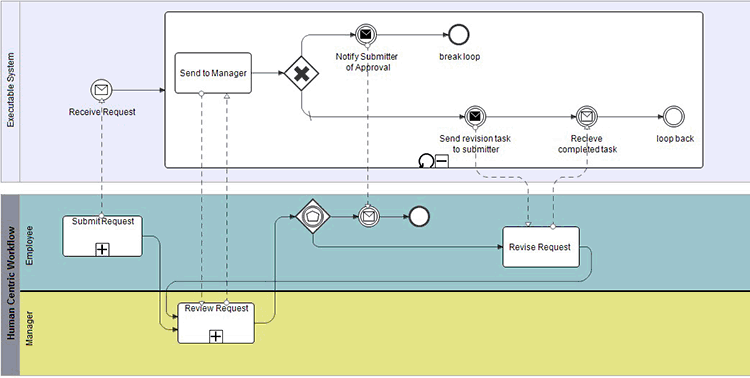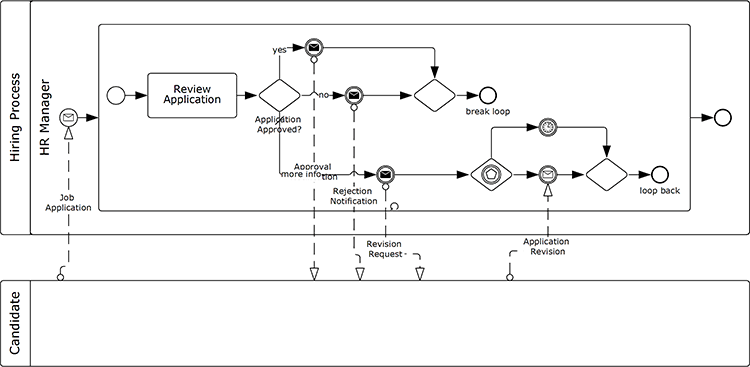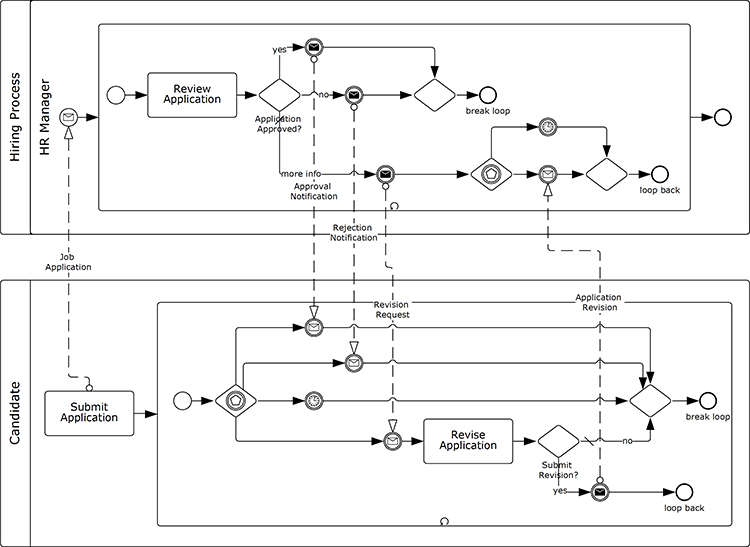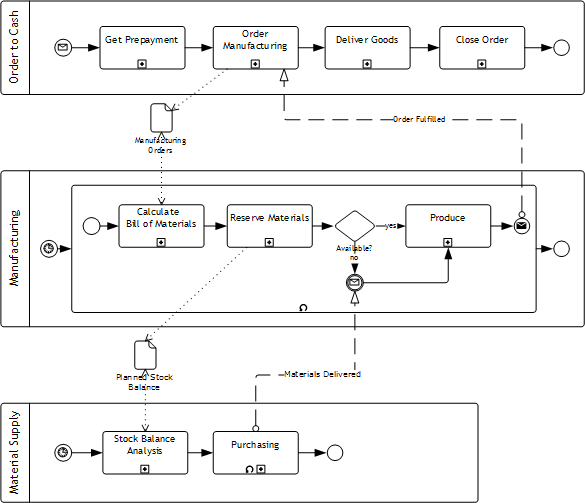Alternative title: “Micromanagement”.
The typical first BPM project issue: how deep to dig into a business process details?
We were engaged into a process called “Purchase order by the three-tier agreement” in one of our first projects. Here is the brief:
- A three-tier agreement is concluded by and between the buyer, the manufacturer and the supplier - manufacturer’s authorized partner.
- The agreement is designed as a framework: it specifies prices, terms and conditions, but not the items to be purchased nor the volume. Each purchase shall be specified by a separate specification containing items and quantities. When signed such a specification enforces contractual obligations to all parties.
- The process is managed by the supplier and there were no intention to directly attach the buyer or manufacturer to BPMS. The whole process runs inside supplier’s organization yet there were such activities as “send the specification to manufacturer for signature” or “ship the goods to buyer”.
The process consists of four majour phases:
- Agreeing the order.
- Signing the specification.
- Delivery.
- Payments and deal closure.
Let’s consider the first phase “Agreeing the order”. Despite terms and conditions are set by the agreement, the bargaining may happen here, e.g. the buyer may request an additional discount for a large order or tougher delivery terms tied to the internal project schedule. In such cases the account manager should agree on the conditions within the organization and with the manufacturer; if the buyer requested too much then a compromise acceptable for all parties should be found. Several iterations may be necessary lasting for months. It’s a delicate work highly depending on account manager’s skills. And this is the key point of the process - the remaining activities are pure routine.
The first version of the process diagram looked like this:
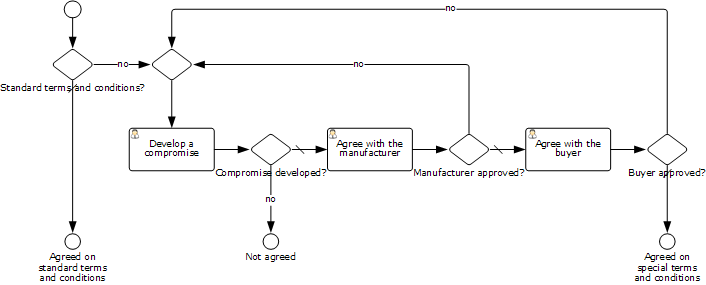
Then it became more compliacated. First, if the manufacturer made a counter-offer that we found acceptable then we should only agree it with the buyer on the next round; the same is true with respect to buyer’s counter-offers. Then it was rightly pointed out that the process may be speed up if negotiations with the manufacturer and the buyer was made in parallel. And so on.
Let me skip the evolution of the process and proceed directly to the resulting diagram:

The key point of this process is that there is a single performer: account manager. No one else cares about where we are inside. Agreeing started / agreeing ended successfully / agreeing failed - that’s all the business (the process owner) is interested in.
I’ve seen process diagrams similar to the first one several times. For example, there was customer’s process of accepting goods to the warehouse with about twenty activities, all performed by a storekeeper. It doesn’t make sence. You get cumbersome scheme prone to frequent changes yet the details do not add value to the process.
Target BPM on the overall process performance and cross-functional problems which are responsible for poor performance in most cases.
It is not easy - you must be ready to find yourself under crossfire if your studies affect existing borders between organization departments. But don’t go the path of least resistance and don’t use BPMS to document a sequence of activities performed by a single person.

